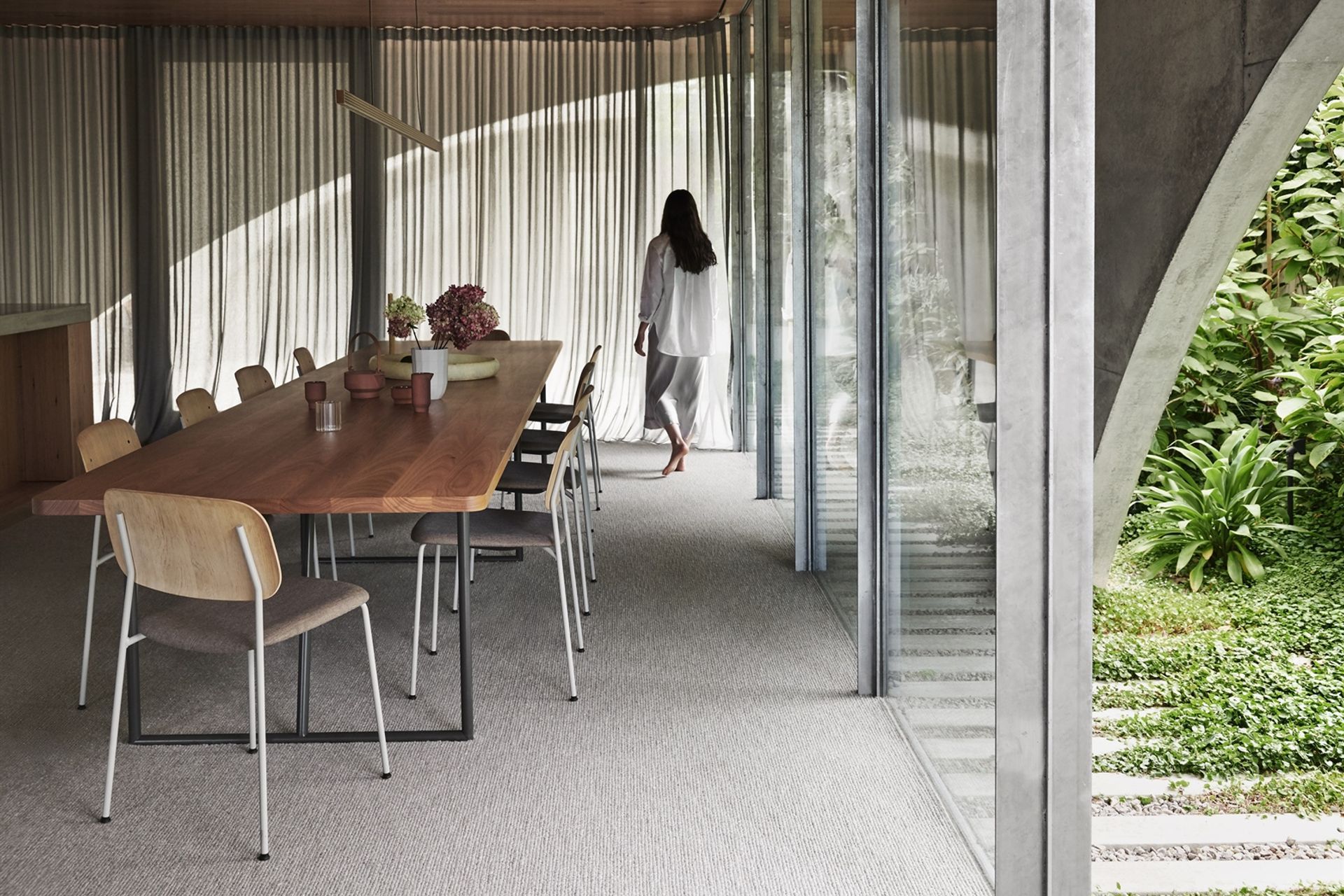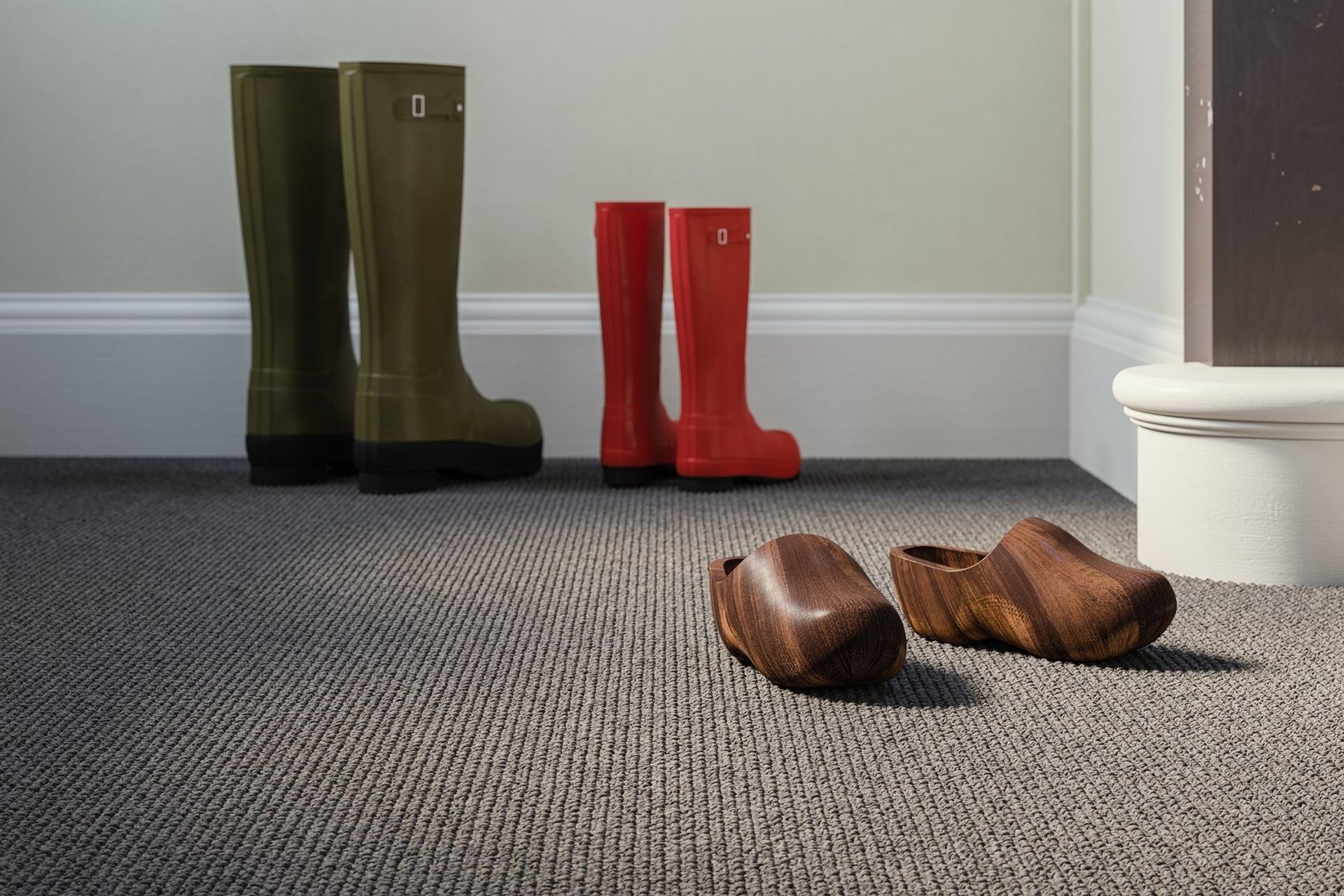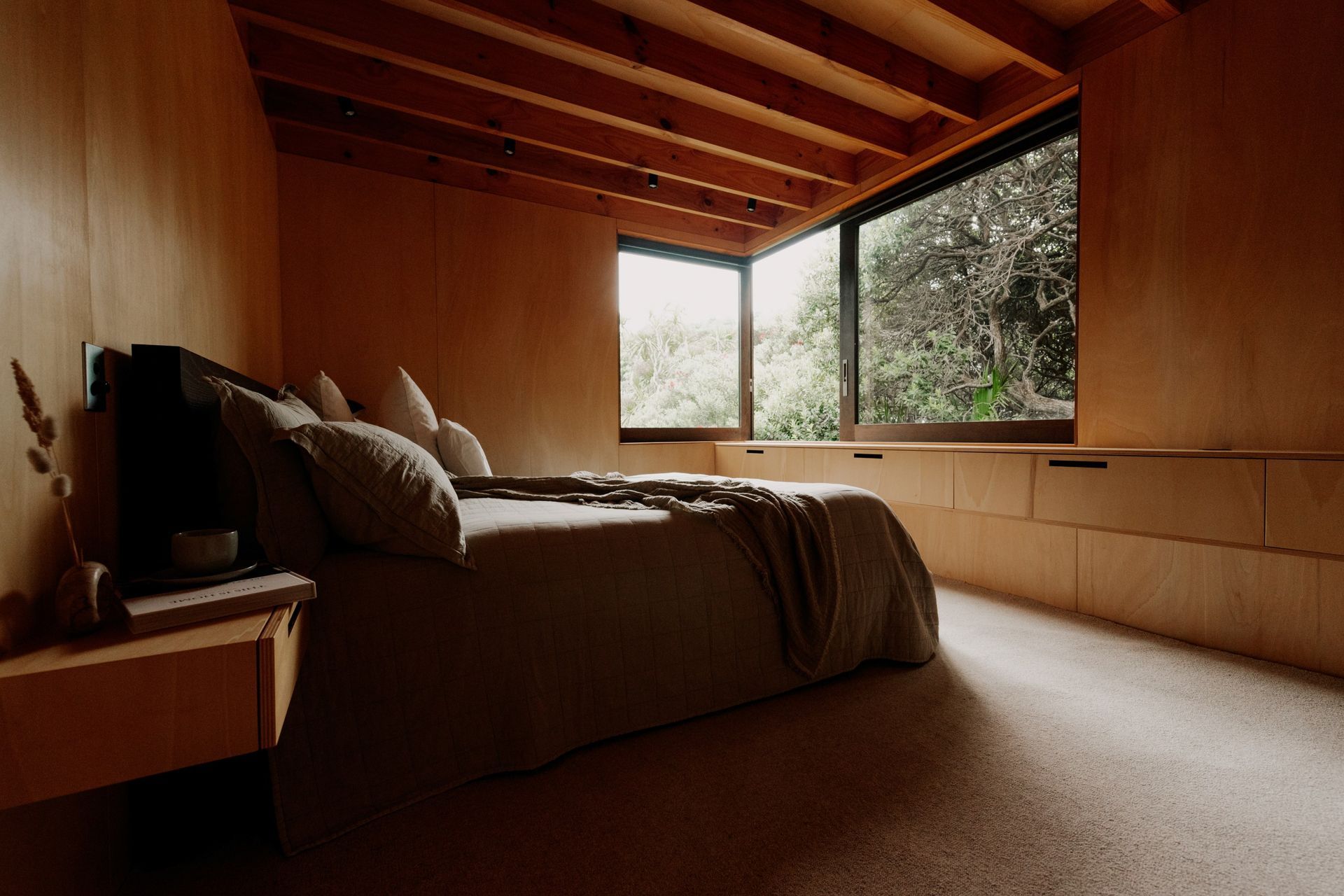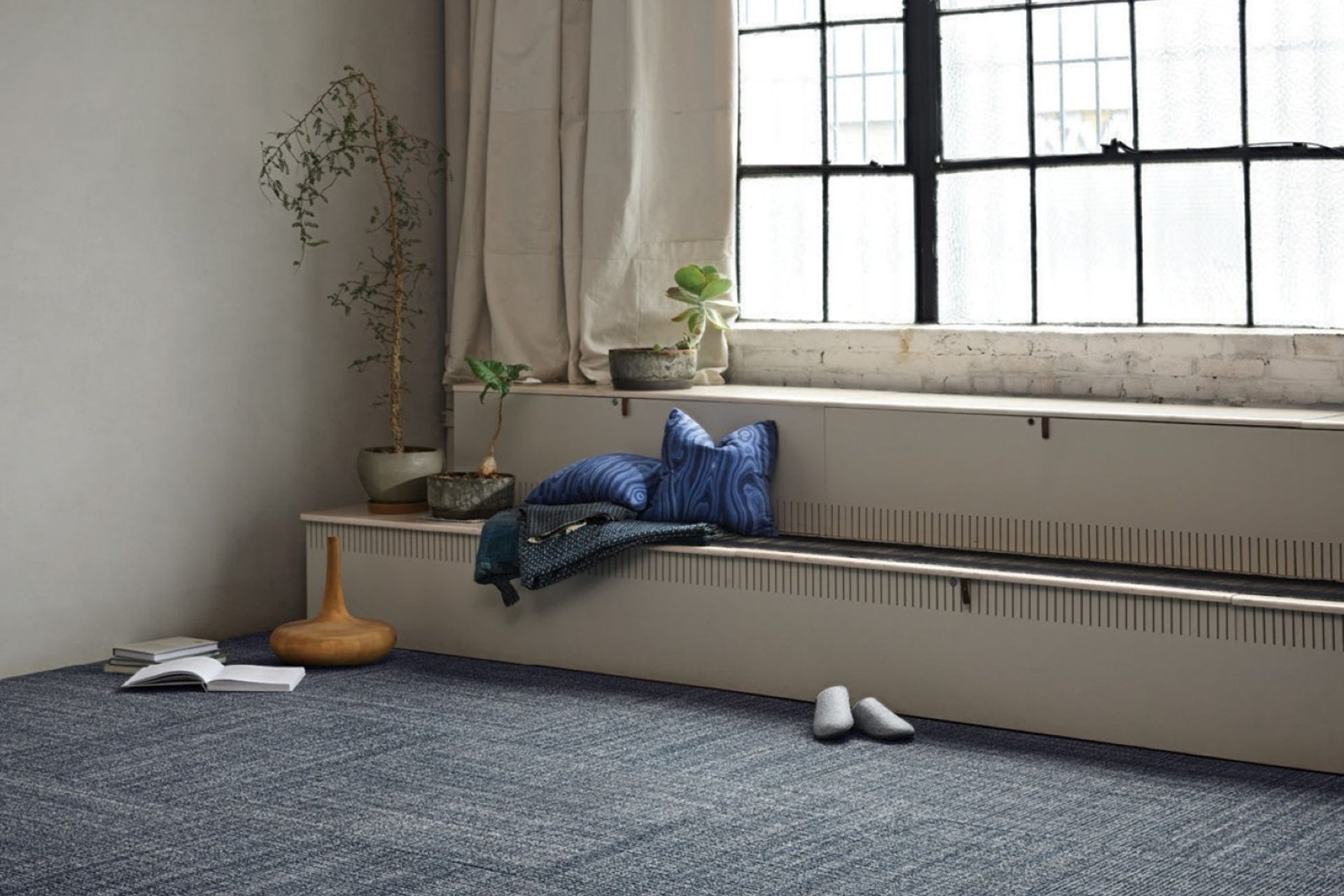Choosing the right carpet for your home: A step-by-step guide
Written by
12 March 2024
•
9 min read
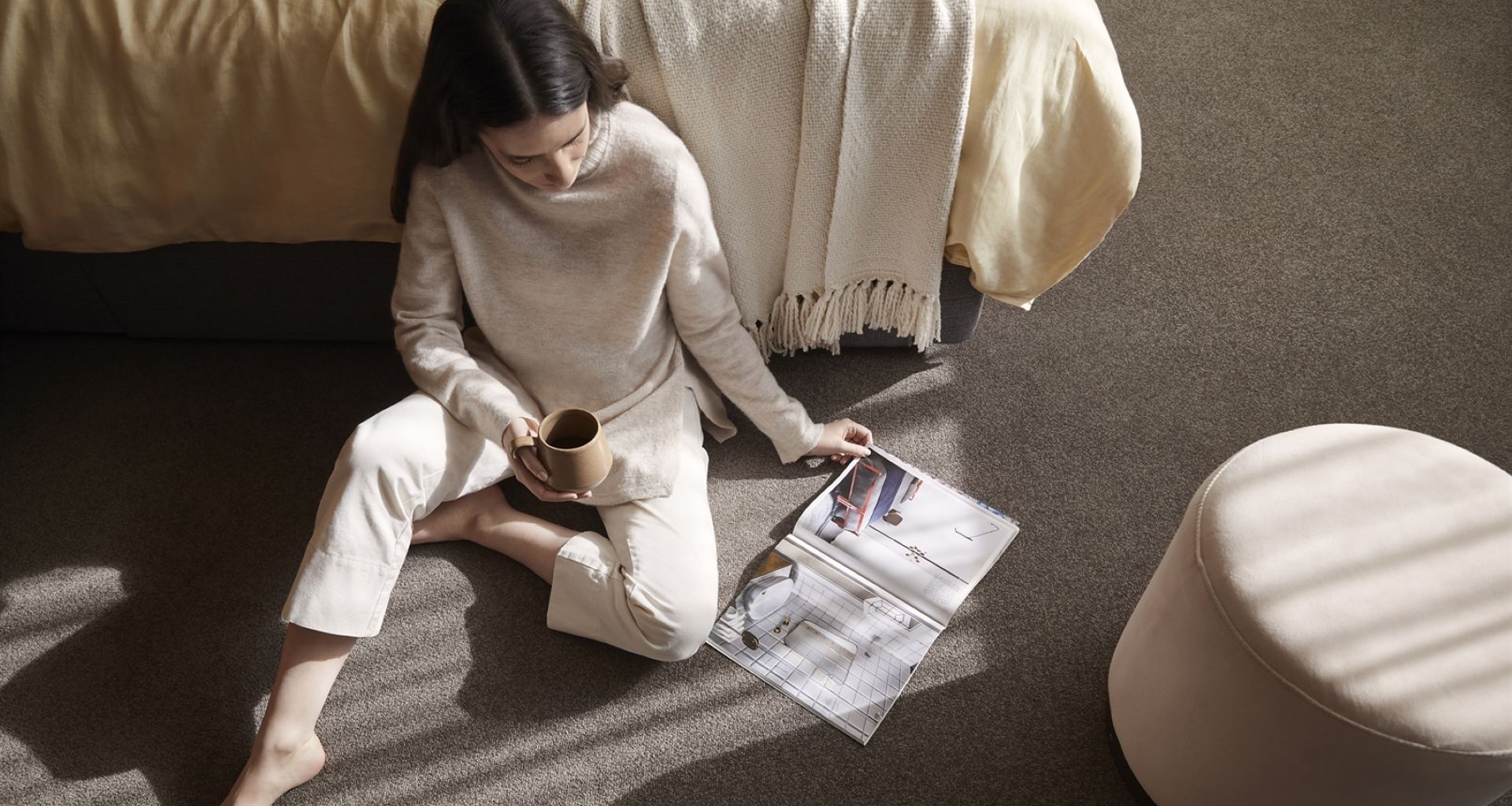
There are many factors to take into consideration when choosing a carpet for your home. That's partly because our homes, and the lives we lead are much more varied and complex than they have ever been. It's also because there are so many different options and features to consider, from luxurious wool carpets to versatile nylon carpets. This step-by-step guide is designed to navigate you through the complexities of choosing the right carpet, ensuring that your selection not only enhances the appearance of your home but also aligns with your lifestyle and practical needs.
1. Think about the functionality of the space
The first thing to think about is the functionality of the space you'll be refreshing with new carpet. Ask yourself — 'how is the space going to be used?'. Is it a high-traffic area like a living room or hallway where a durable option like a nylon carpet might work best? Is it a low-traffic zone like a bedroom where a softer choice like a wool carpet might be more suitable? Is the room awash with natural light during the day (making fade-resistance a factor) or is it space prone to spills (requiring stain-resistance)? Ensuring your carpet is fit for purpose is key to finding a practical and long-term solution.
2. Consider your own lifestyle habits
The lifespan and condition of a carpet is most directly impacted by the occupants of the household making it a pivotal factor in any purchasing decision. This is usually something that will be more significant for families with young children or pets as they tend to increase the risk factors for spills and general wear and tear. In these situations, durability and stain resistance are key qualities you want to prioritise here. You will also want a carpet that is quick and easy to clean. For those with pets specifically, a low pile carpet is best to prevent snagging on claws. For those with quieter households, you may want to consider a choice that accentuates the peacefulness of your abode, like a thicker high pile carpet with superior noise insulation.
3. Fully understand your carpet material options
Early on in your carpet-buying journey, you'll need to look at your carpet material choices — one of the first things people naturally look at anyway. If you've already thought about the function of your space and lifestyle habits at home, it gives you a head start as you already have the traits and qualities you need in a carpet. The next step is essentially marrying these up with the materials available. Common choices in New Zealand include synthetic carpets like nylon (durable and stain-resistant), and polyester (soft and vibrant) as well as natural options like wool carpet (natural and luxurious). That's a very high-level overview and it's an area you'll want to take a deep dive into to fully understand the subtleties and nuances between each type so you can make a considered choice.
Related article: A guide to the different types of carpets for your home
4. Prioritise comfort through texture
The texture of a carpet plays a vital role in defining the look and feel of a space. These factors should not be underestimated as they impact the living experience and ambience of your home. For instance, a plush cut pile carpet can transform a bedroom into a cosy sanctuary providing a soft feeling underfoot. A loop pile carpet on the other hand is denser and firmer underfoot with a more uniform look which some people may prefer. The texture is also strongly influenced by the choice of material discussed above and it really helps to see these different options in person so you can truly appreciate their tactile qualities and differences.
5. Choose your colour wisely
Colour is massively important in interior design and the choice of carpet colour always has a huge impact on a room's appearance, setting the tone of a space. With colour, you can manipulate moods and create impressions very effectively. For example, light colour carpets can make small rooms feel larger and more inviting while darker colours can add a sense of cosiness to larger spaces. There are also practical factors to consider, like the fact that darker colours are more forgiving when it comes to stains and foot traffic though could be more susceptible when it comes to fading. When selecting the right carpet colour, you should also think about the colour scheme of the room with respect to your walls and ceiling while also including the colour of decor features as they should all complement each other for a cohesive, designed look.
Related article: The most popular interior design styles shaping Kiwi homes
6. Factor in all the maintenance
Some carpets require more maintenance than others and it's an issue you need to be aware of before committing to any particular choice. If you lead an especially busy life, then a carpet that is easy to clean and maintain is preferable to ensure your home remains attractive and hygienic over time. Materials and fibres that are fade and stain-resistant may also be something to prioritise given your environment and lifestyle habits. Low-pile carpets and those with a tight loop structure like Berber carpets, are also easier to vacuum as they don't trap as much dirt and dust as high cut pile carpets can. These aspects are ones people don't naturally think about straight away but you can easily appreciate the impact they'll have over a longer period of time.
7. Ask about sustainability
Sustainability is becoming increasingly important for consumers in New Zealand with people looking to minimise their carbon footprint in all facets of life. Carpets that are made from natural, recycled, or renewable materials, such as wool, recycled plastic, or sustainably harvested plant fibres, not only reduce the demand on non-renewable resources but also ensure that the carpet can be recycled or can decompose naturally at the end of its life. Additionally, they often have a lower environmental impact in terms of production and disposal, contributing less to landfill waste and pollution. Many quality carpets prioritise this trait in their production and manufacturing but it never hurts to ask about it to be sure.
8. Don't underestimate the underlay
While most of your attention will rightly be on the carpet itself, the underlay that pairs with your choice plays a pivotal role in the overall performance and longevity of your carpet. In many situations, it's often an afterthought or a quick choice to go with the standard offering without much attention. However, the quality of an underlay can improve comfort underfoot and the insulation of your home which can keep it warmer and reduce energy bills. A good quality underlay can also extend the life of your carpet by absorbing the impact of foot traffic and reducing wear on the carpet fibres themselves. The standard choice may be perfectly fine but at the very least you should have a conversation with your carpet supplier about it before making a call.
9. Get quotes on pricing, including installation
Obtaining multiple quotes for carpet prices and installation is a critical step in the carpet selection process. This helps you make an informed financial decision, allowing you to compare different carpet types and installation services that you can then you can align with your budget. You should also get clarification on what installation includes, for example, the moving of furniture, removal of old carpet, floor preparation etc. The more in-depth your questions here, the fewer potential surprises you'll have when the invoice is received. Again, most high-quality carpet suppliers are very transparent through this process but you should always be diligent when money is changing hands.
Related article: The cost of carpet in New Zealand: A pricing guide for 2024
10. Explore cost-saving opportunities
On the subject of money, if you're on a really tight budget you may wish to explore cost-saving opportunities with end-of-line, redundant line, short ends and seconds products that are often available from suppliers or direct from the manufacturers themselves. While not for everyone, you can sometimes find great deals with carpets that are perfectly fine for your home. This can save you significant dollars in the price of the carpet itself which you can reallocate elsewhere in your home renovation project.
11. Check the warranty
A carpet warranty provides a layer of protection and assurance for your investment. These warranties often cover aspects such as fire resistance, stain and soil resistance, wear and tear and manufacturing defects, ensuring that the carpet maintains its appearance and functionality over time. Having a solid warranty can offer peace of mind that any potential issues will be addressed by the manufacturer or supplier without additional costs. It's also indicative of the quality and durability of the carpet, given their willingness to back it up with a guarantee. Don't be afraid to ask specific questions about it either, if something in the fine print isn't clear, which again will give you that peace of mind.
12. Test with carpet samples at home
Finally, be sure to bring carpet samples home to see how they look in your space and environment at different times of day and under your lighting. You'd be surprised how different carpets can look in a showroom compared to your home. That's not to say showrooms are designed to be misleading but is a natural consequence of each environment being unique from one to the next. Most suppliers will be happy to send you home with a carpet sample (or three) to try and test out in a hands-on way. This, perhaps more than anything, will give you the most accurate impression of how the carpet will look and feel in your space before making that final decision.
Picking the perfect carpet for your home
While there are a few steps to follow in this guide, you can clearly see the significance of each and how it can lead you to the best carpet for your home. At the end of the day, the more you know the more informed your decision will be and the more you'll get out of your new carpet investment in the short and long term.
